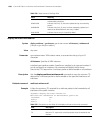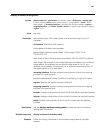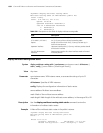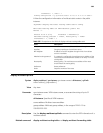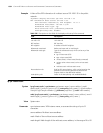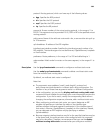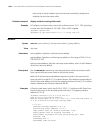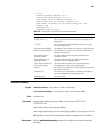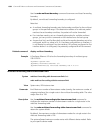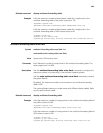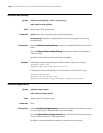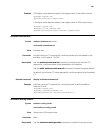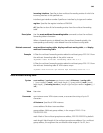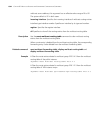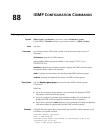
1338 CHAPTER 87: MULTICAST ROUTING AND FORWARDING CONFIGURATION COMMANDS
Use the undo multicast boundary command to remove a multicast forwarding
boundary.
By default, no multicast forwarding boundary is configured.
Note that:
■ A multicast forwarding boundary sets the boundary condition for the multicast
groups in the specified range. If the destination address of a multicast packet
matches the set boundary condition, the packet will not be forwarded.
■ If an interface needs to act as a forwarding boundary for multiple multicast
groups, just carry out this command on the interface once for each group.
■ Assume that Set A and Set B are both multicast forwarding boundary sets to be
configured, and B is a subset of A. If A has been configured on an interface, it
is not allowed to configure B on the interface; if B has been configured on the
interface before A is configured, the previously configured B will be removed.
Related command: display multicast boundary.
Example # Configure Ethernet 1/0 to be the forwarding boundary of multicast group
239.2.0.0/16.
<Sysname> system-view
[Sysname] interface ethernet 1/0
[Sysname-Ethernet1/0] multicast boundary 239.2.0.0 16
multicast forwarding-table downstream-limit
Syntax multicast forwarding-table downstream-limit limit
undo multicast forwarding-table downstream-limit
View System view, VPN instance view
Parameter limit: Maximum number of downstream nodes (namely, the maximum number of
outgoing interfaces) for a single route in the multicast forwarding table. The value
ranges from 0 to 128.
Description Use the
multicast forwarding-table downstream-limit command to
configure the maximum number of downstream nodes for a single route in the
multicast forwarding table.
Use the
undo multicast forwarding-table downstream-limit command to
restore the system default.
By default, the maximum number of downstream nodes for a single route in the
multicast forwarding table is 128.
The system-allowed maximum number varies with different device models. Refer
to your specific device model.



